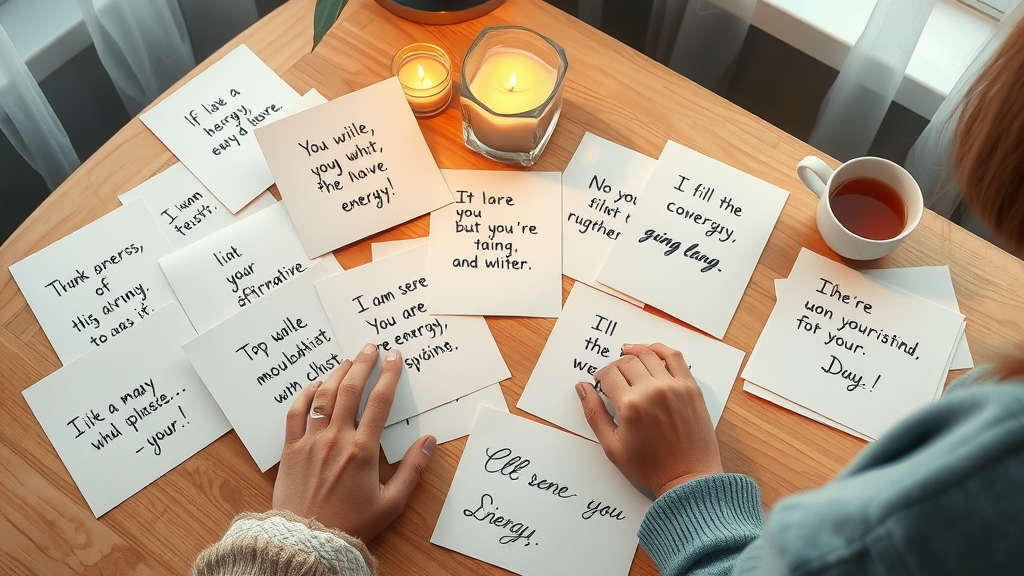Imagine this: you’re sitting quietly in a cozy room, warm sunlight streaming across the floor, your breath slowing as you feel your body sink deeper into relaxation. With each deep breath, worries slip away. In this peaceful state, you open a notebook—ready to write your own self-hypnosis script, a personal blueprint for positive change. Self-hypnosis is more than a calming ritual; it’s your key to unlocking calm and peace, transforming obstacles into opportunities, and guiding your subconscious mind toward the life you desire. If you’ve ever wanted to master the art of self-guided transformation, this guide will show you how.

Unlocking the Power Within: Why Write Your Own Self-Hypnosis Script?
Writing your own self-hypnosis script gives you direct access to the subconscious mind, allowing you to sow seeds of change with intention and care. Unlike generic recordings, a script you craft for your needs can blend your voice, personal experiences, and unique language, making your journey feel truly tailored. This customization empowers you to address specific goals—from fostering calm and peace, boosting confidence, or finding a state of relaxation even on a busy day. By engaging in the process, you spark a deeply personal emotional journey, giving your mind full permission to accept new, positive suggestions.
As you compose your script, you connect deeply with your intentions, encouraging your mind to relax, feel warm, and embrace positive change. Harnessing pacing and leading techniques, such as guiding yourself with a gentle rhythm or the sound of the waves, helps you achieve that coveted hypnotic state. Whether you wish to address stress, focus, sleep, or personal growth, your self-created script is a powerful tool to propel you toward lasting transformation.
The Emotional Journey of Self-Hypnosis
The act of writing a self-hypnosis script is transformative in itself. It’s an opportunity to pause, listen to your true needs, and articulate your desires without judgment. You tap into your strengths and vulnerabilities, holding space for both. This journey brings forth emotions—hope, anticipation, and often, relief—as you grant yourself permission to let go and step forward. Recording these words and later hearing your own voice during a session strengthens the connection to your inner wisdom. Soon, each deep breath and every repeat of a positive suggestion signals your mind to sink deeper into relaxation and change.
"The mind is powerful. Writing your own self-hypnosis script lets you tap into that power with intention."
What You'll Learn in This Guide to Writing Your Own Self-Hypnosis Script
Fundamental principles of hypnosis scripts
Step-by-step process to write your own self-hypnosis script
Pro tips for optimizing your personal hypnosis script
Best practices for recording and using your self-hypnosis script

Understanding Hypnosis: A Brief Foundation for Effective Script Writing
What is a Hypnosis Script and How Does It Work?
A hypnosis script is a structured set of words, affirmations, and suggestions, crafted to guide your conscious and subconscious mind into a receptive, hypnotic state. Through specific language and guided imagery—like inviting you to stand on the beach and hear the sound of the waves—the script helps you relax, focus, and accept positive transformation. When you write your own self-hypnosis script, you empower yourself to include the language, imagery, and suggestions that resonate most, promoting a feeling of ownership and deeper change.
Hypnosis scripts work by quieting the conscious mind, leading to increased receptivity in the subconscious mind. Proper phrasing, a deliberate slower pace, and a focus on sensory detail (like “feel warm” or “deeply relax”) support your journey. The words guide you step by step—beginning with an induction, moving through a state of profound calm and peace, and ending with empowering awakening cues, allowing you to return to waking consciousness feeling refreshed.
The Science Behind Self-Hypnosis and Script Writing
Research suggests that self-hypnosis can alter patterns in the brain, especially in areas linked to focus, stress reduction, and personal motivation. The hypnotic state—characterized by deep relaxation, narrow attention, and heightened suggestibility—enables positive suggestions to imprint on the mind much more effectively than in ordinary states. This is why intention and personalization are key; when you craft and record your own script, your mind pays full attention to familiar themes, increasing the likelihood of meaningful positive change.
Scientific studies also indicate that the combination of relaxation exercises, mindful breathing, and resonant language can prompt beneficial physiological responses, such as reduced heart rate and lower stress hormones. So, when you write your own self-hypnosis script and practice regularly, you bridge the gap between aspiration and action, helping to achieve your goals by leveraging your mind’s natural adaptability.
Preparing to Write Your Own Self-Hypnosis Script: Setting Intentions and Goals
Identifying Your Core Purpose for Self-Hypnosis
The journey begins with clarity: What do you want to change, improve, or manifest in your life? Pinpointing your motivation—be it stress relief, self-confidence, better sleep, or new habits—gives your script focus and purpose. Reflect for a moment, considering what matters most to your well-being right now. This step ensures your self-hypnosis sessions are anchored in authentic aspiration, maximizing your script’s effectiveness. Taking the time to read through your intentions can also reinforce commitment, priming both the conscious and unconscious mind for transformation.
List your top goals, then choose a core intention to guide your scripting. Ask yourself questions like: “What do I really want to change?” and “How will my life improve when this is achieved?” The more specific, the better—clear intentions enable targeted, actionable language that resonates throughout the self-hypnosis experience.
Crafting Clear and Achievable Affirmations in Your Hypnosis Script
Affirmations are the backbone of any hypnosis script. Effective affirmations are positive, present-tense, and achievable. Instead of vague hopes, use statements like “I deeply relax and feel safe” or “Each day, I achieve my goals with confidence.” Avoid negative or ambiguous wording, as it may confuse the subconscious. Phrases that evoke a sensory experience—“I feel the warmth of the sun as I stand on the beach”—bypass resistance and make each suggestion more visceral.
Repetition is also crucial. Phrasing your affirmations to allow the mind to sink deeper into each suggestion strengthens neural pathways and builds lasting belief. As you write your own self-hypnosis script, take care to shape affirmations that are personal and inspiring, fueling your progress every session.
Video Demonstration: Examples of Powerful Self-Hypnosis Script Goals
Elements of a Powerful Self-Hypnosis Script
Structure and Flow: From Induction to Awakening
A well-crafted self-hypnosis script flows in five core sections: 1) Induction (to feel your body relax with a deep breath), 2) Deepening (inviting you to sink deeper into calm), 3) Suggestions and Affirmations (delivering your positive, goal-focused statements), 4) Future Pacing (imagining yourself living out the positive change), and 5) Awakening (closing with cues to begin to come back and open your eyes feeling refreshed).
Each phase builds upon the last, beginning with the present moment, guiding you towards your target state, and returning you gently to waking consciousness. Using a slower pace and consistent, nurturing language throughout helps maintain a smooth transition and sustains relaxation and calm. With practice, this structure becomes intuitive, guiding you effortlessly.
Key Sections in a Self-Hypnosis Script vs. Professional Hypnosis Script |
||
Section |
Self-Hypnosis Script |
Professional Hypnosis Script |
|---|---|---|
Induction |
Personalized for comfort and familiarity |
Based on standard techniques and therapist-client trust |
Deepening |
Self-directed, uses personal visualization |
Therapist-led with advanced techniques |
Suggestions |
Tailored to individual goals (achieve your goals) |
Targeted, sometimes broad applications |
Awakening |
Cues in your own voice for gentle return |
Guided with therapist's authority |
Language, Tone, and Personalization in Your Hypnosis Script
Your self-hypnosis script should sound like you—warm, kind, and supportive. Use gentle, direct language and choose words that naturally evoke calm and peace. Avoid abruptness or unclear directions; offer yourself encouragement (“With every deep breath, I feel more at ease”). Personal details, like your favorite beautiful beach or past moments of joy, encourage a more profound connection and enhance receptivity.
Vary your pitch and volume when recording aloud—an increased pitch and volume for empowering statements, a slower pace for induction, and soothing words for deepening. Personalization amplifies the script’s effectiveness, ensuring your subconscious recognizes these affirmations as truths crafted just for you.

Step-by-Step: How to Write Your Own Self-Hypnosis Script
Choose a quiet, comfortable setting: Find a distraction-free space where you can relax, sit in a comfortable position, and focus on yourself.
Define your intention: Be specific with what you want your script to accomplish—visualize your desired outcome in the present moment.
Create a calm induction: Begin with gentle cues, such as “As you feel your body settle with each deep breath, begin to relax.” Incorporate sensory imagery like the sound of the waves or the sensation of warmth.
Introduce affirmations and suggestions using positive language: State your goals as truths, letting each phrase invite you to sink deeper. “With every breath, you deeply relax and confidence grows.”
Close with empowering awakening statements: Transition back to alertness gently: “You begin to come back to the present, open your eyes feeling refreshed and energized.”
Practicing this process regularly will help you quickly access your hypnotic state and reinforce positive change, no matter your focus—relaxation, motivation, or goal-setting.
Common Pitfalls and Mistakes to Avoid When You Write Your Own Self-Hypnosis Script
Steer clear of vague directions or negative wording, such as “don’t be anxious”—the subconscious ignores negations, so instead, use “I am calm and at peace.” Avoid scripts that are too long or unfocused; concise, clear scripts are easier to follow and more effective. Make sure to record in a truly comfortable position and avoid distractions, ensuring your mind can offer full attention. Lastly, maintain a confident, nurturing tone—since self-doubt or inconsistency in voice can reduce the impact of your suggestions.
"Clarity and positivity are vital. Ambiguous or negative language dilutes the power of your script."
Video Tutorial: Recording and Using Your Self-Hypnosis Script Effectively
Expert Insights: What Makes a Hypnosis Script Effective?
Insights from Leading Practitioners on Crafting Custom Hypnosis Scripts
Seasoned hypnotherapists emphasize that effective scripts share three things: 1) clarity of intention, 2) immersive sensory language, and 3) consistent, affirmative phrasing. Using a blend of intentional pacing, confidence, and warmth, they guide listeners’ attention from the surface of consciousness into the depths of the subconscious. These professionals recommend incorporating personal symbols and safe places—like a beautiful beach—to strengthen the impact. Practitioners also advise against abrupt endings; instead, scripts should allow time for one to begin to come back to the present, regaining waking consciousness gently.
Another tip from experts: tailor every script for the current goal. If today’s target is stress relief, center the imagery and suggestions around warmth, comfort, and the sound of the waves to foster relaxation. When seeking motivation or confidence, vibrant, energizing imagery and phrases with an increased pitch and volume can help propel you toward achieve your goals.

People Also Ask: How to Write a Self-Hypnosis Script?
How to write a self-hypnosis script?
Begin by choosing a comfortable position and identifying a clear intention for your session. Write a gentle induction to relax your body and mind, followed by a deepening process—often through slow breathing or visualizing a beautiful beach with the sound of the waves. Add in affirmations stated positively (“I am relaxed and focused”), and finish with awakening statements that gently return you to the present. Recording the script in your own voice, using your natural pitch and volume, will enhance effectiveness.
What to say during self-hypnosis?
During self-hypnosis, speak in a kind, soothing manner. Use positive, present-tense language: “With every deep breath, I deeply relax.” Phrases like “I am safe, I am calm and peace fills me” help establish the desired state of relaxation. Avoid negative phrasing. Add detailed imagery and encourage yourself to sink deeper into the present moment, continuously reaffirming your goals.
Can Chatgpt perform hypnosis?
ChatGPT cannot perform live hypnosis or induce a true hypnotic state, but it can help you create a hypnosis script by providing structure, suggestions, and language ideas. Ultimately, only you or a qualified practitioner can guide you into self-hypnosis.
Can I teach myself self-hypnosis?
Yes. With the right guidance and regular practice, anyone can learn to write your own self-hypnosis script and use it for personal transformation. Start with simple scripts and repeat sessions frequently, adjusting your language as your needs evolve.
Optimizing and Recording Your Own Self-Hypnosis Script
Tips for Personalizing and Voicing Your Hypnosis Script
Adjust every aspect of your script to fit your personality and learning style. Use imagery that genuinely relaxes you—like standing on a beautiful beach or listening to the gentle sound of the waves. When recording, experiment with your pitch and volume; use a slower pace for inductions, and increased pitch and volume for empowering suggestions. Be consistent in tone and avoid monotony for maximum engagement. Practicing out loud in a comfortable position can make the process feel more natural and impactful.
Review and update your recording as your needs change. Sometimes, just a subtle change in affirmation wording or reading style can unlock new levels of receptivity and positive change.
Best Apps and Tools for Recording a Self-Hypnosis Script
Smartphone voice recorders: Easy to use and always on hand for capturing and playing back your script.
Audio editing software: Helps you edit pauses, adjust pitch and volume, or add soothing background sounds like nature or gentle ocean waves.
Text-to-speech apps: For those less comfortable recording their own voice, these can create gentle, computer-generated narrations tailored to your script.
Choose tools that enable natural playback at your preferred slower pace and can enhance your ritual of daily self-hypnosis.

Advanced Techniques: Tailoring Your Hypnosis Script for Specific Goals
Writing Scripts for Anxiety, Focus, Sleep, and Confidence
To address anxiety, dedicate your script to sensory cues that ground you in the present moment, like feeling the warmth of sunlight or the sound of the waves. Use affirmations such as, “I am safe and grounded.” For focus, include suggestions like “All distractions fade, my mind is clear.” A hypnosis script for sleep should guide you to sink deeper into relaxation with each breath, inviting “heavy eyelids and comfort.” Confidence scripts benefit from phrases like, “I achieve my goals with ease—my unconscious mind supports me.”
Each script should use a calming induction, detailed affirmations, and cues to close the session and open your eyes or drift to sleep, as needed.

Adapting Your Self-Hypnosis Script as Your Needs Change
Life is dynamic, and so should your self-hypnosis script be. As your goals evolve—whether you move from stress relief to cultivating new habits—routinely update your script. Adjust your language, imagery, and affirmations to match your current priorities. Refreshing your script ensures it maintains its power, keeping your subconscious mind engaged and responsive to your growth journey.
Regularly reviewing your script, even if only to add a new affirmation or change your induction imagery (perhaps from ocean waves to a mountain breeze), will sustain your motivation and success.
Summing Up: Begin the Journey of Writing Your Own Self-Hypnosis Script
Key Takeaways for Effective Self-Hypnosis Script Writing
By learning to write your own self-hypnosis script, you create a personalized bridge to positive change. Anchor your process with clear goals, use vivid sensory details, and practice regularly for the best results. Voice, pacing, and continual adaptation are vital in keeping your mind motivated and your progress strong.
"Your self-hypnosis script is your blueprint for change—personalize, practice, and persist."
FAQs: Everything Else You Need to Know to Write Your Own Self-Hypnosis Script
Can anyone write their own self-hypnosis script?
Absolutely! With basic guidance and practice, anyone can craft and use their own script. Personalization and patience are key for effective change.
How often should I update my self-hypnosis script?
Review your script every month or whenever your goals or circumstances shift. Regular updates ensure your sessions stay relevant and engaging.
Is it safe to use self-hypnosis scripts daily?
Yes. Daily use of a well-crafted self-hypnosis script is safe and often produces faster, more reliable results in cultivating relaxation and calm or positive change.
What should I avoid in a self-hypnosis script?
Avoid negative statements, ambiguous language, and excessively long scripts. Keep your affirmations direct, positive, and personalized.
How long should a self-hypnosis script be?
Most effective scripts last 10–20 minutes when read aloud—long enough to guide you into a hypnotic state and reinforce your goal, but brief enough for regular practice.
Ready to Transform Your Mindset? Start Writing Your Own Self-Hypnosis Script Today
Begin your journey of self-directed change—write your own self-hypnosis script now and step forward into a new chapter of personal transformation. Practice, revise, and let your words unlock the empowered mind within you.
 Add Row
Add Row  Add
Add 




Write A Comment